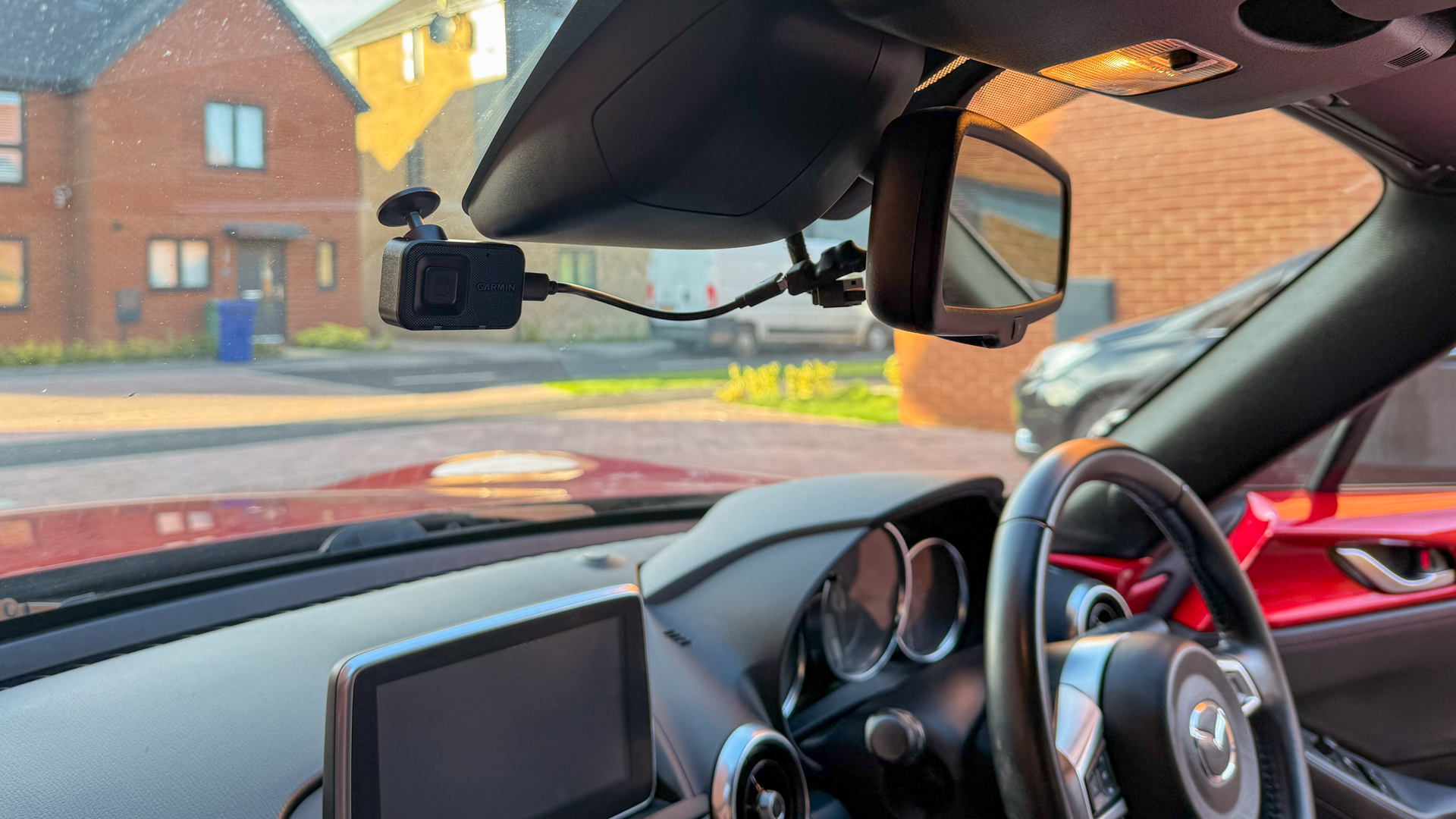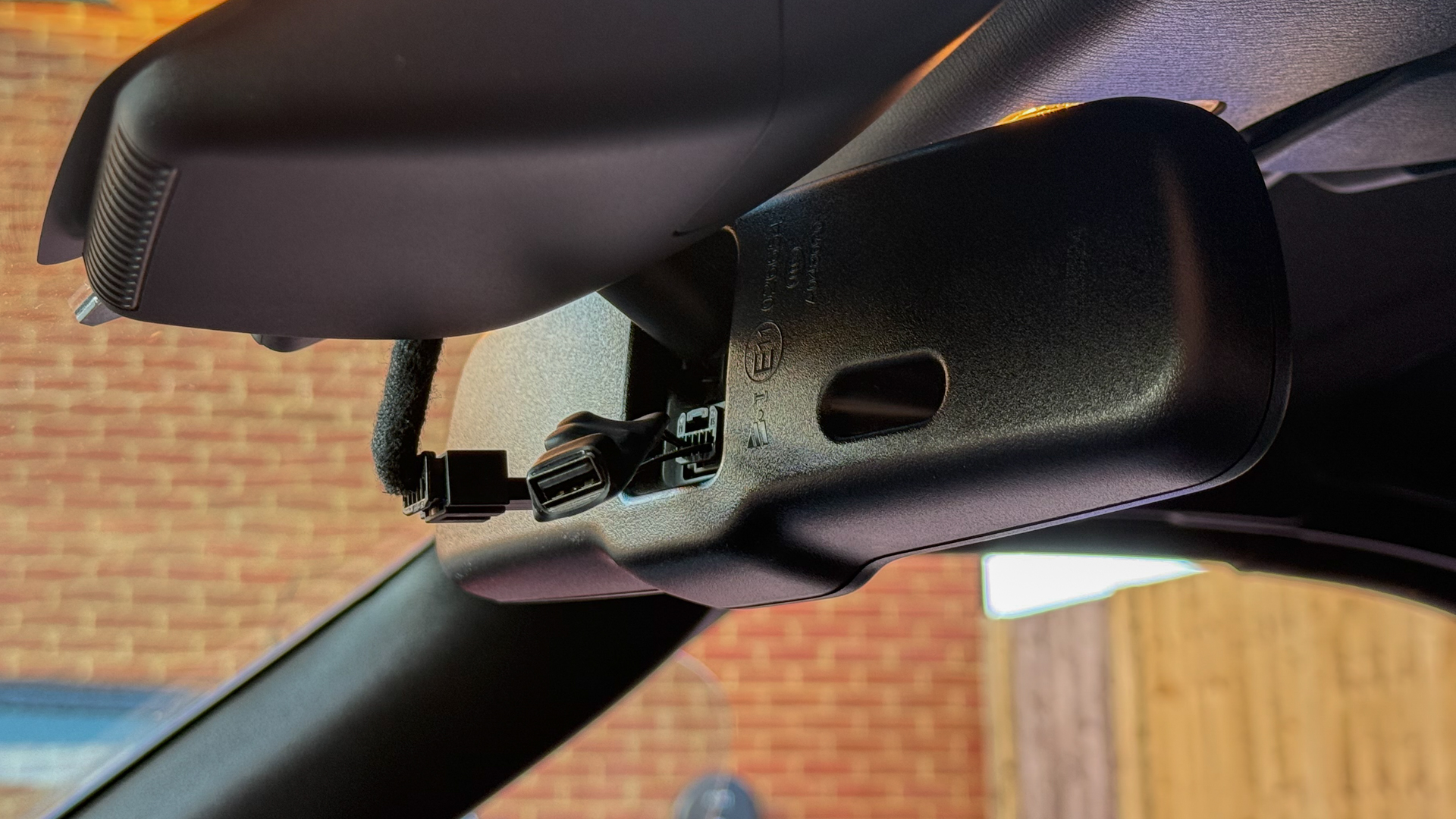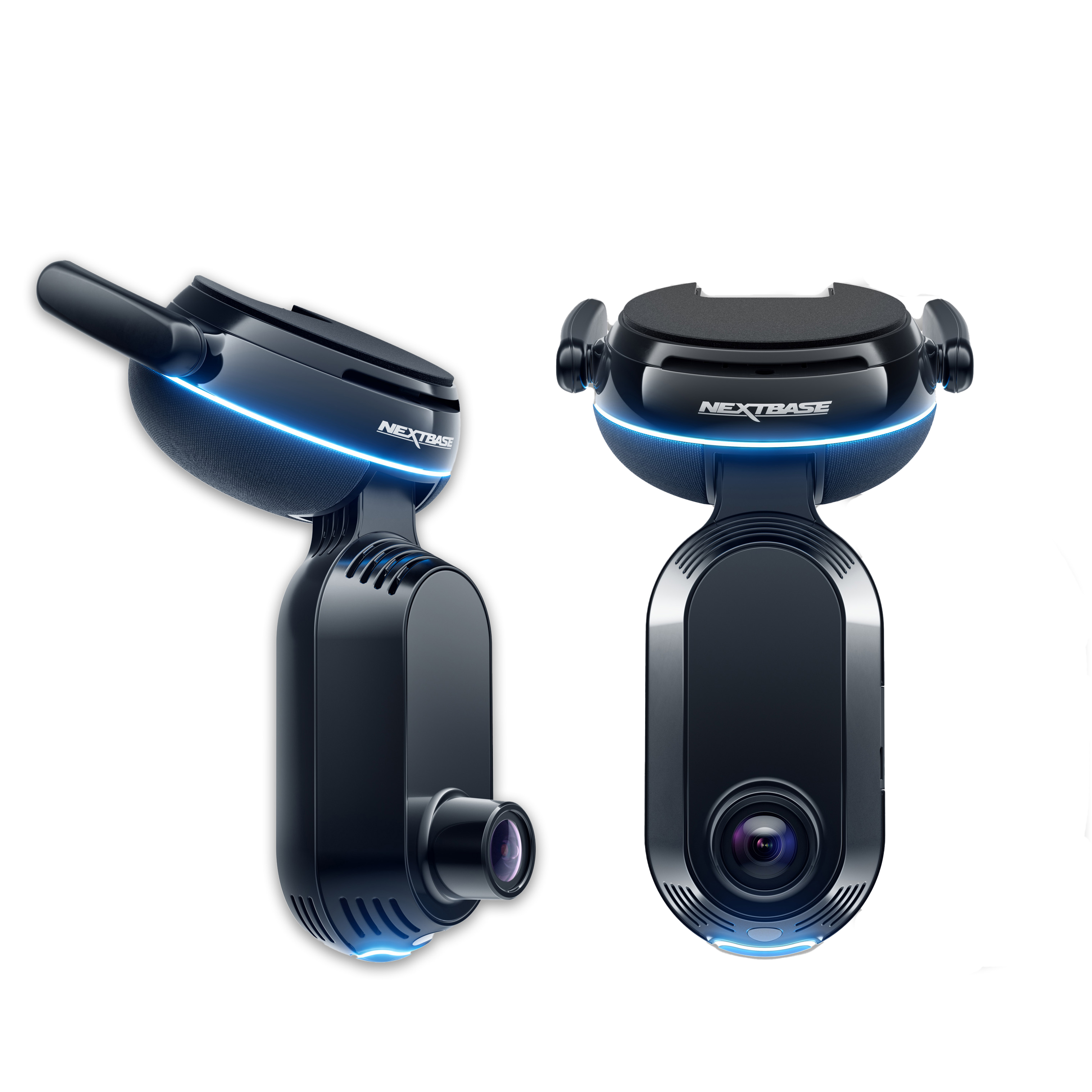This ingenious adapter is the dash cam installation hack I’ve been waiting for

If you’ve installed a dash cam then you’ll be all too familiar with the frustration of running long, messy cables through the interior of your car. Yes, they can be tucked behind interior trim panels. But it’s a pain to do this neatly and you still end up wasting time running a cable from the top of the windshield to a USB socket, 12-volt supply or OBD connection which, almost always, is a good couple of feet away.
When testing dash cams I tend to run cables over the passenger sun visor, then through the door handle and down towards the 12-volt socket in the footwell. It’s (just about) tidy enough, but isn’t compatible with using the passenger door. The alternative is to let the dash cam cable dangle inelegantly down, just like we’ve all seen in Ubers where the driver has three smartphones on the dashboard.
Thankfully, I’ve just found a solution. It comes from a company called Dongar and it’s simply called the Dash Cam Power Adapter. That unassuming name hides just how clever this little gadget is, since it’s one of those products that, the moment you’ve used it, makes you wonder why no one – not even dash cam makers themselves – had thought of this before. It only costs $42 at Amazon US, or £33 at Dongar UK (in the UK it's £40 at Amazon), just make sure you pick the right model for your vehicle – more on compatibility later.
Its simplicity is a thing of beauty. You know how cars often have a self-dimming central mirror? The ones that dim to stop you being dazzled at night by the lights from following vehicles? Well this adapter shares the mirror’s power supply with your dash cam. That’s it. It gives you a short tidy cable, enough power to run a dash cam, right where it needs to be.

How it works
You’ve probably never noticed – I certainly hadn’t – but there’s probably a cable plugged into the back of your car’s interior mirror. I know that’s a broad statement, and it won’t be true of every single car.
But if you have an auto-dimming mirror, there’s a good chance you’ll see a cable back there, and Donger has discovered that there’s more power running through that cable than the mirror needs. Enough power to also run a dash cam, in fact.
Not every dash cam is compatible. I’ll cover more of that in the compatibility section later. But Dongar currently sells versions of its adapter that work with a wide range of five- and 10-pin dimming mirror connections for vehicles from manufacturers like BMW, Ford, Mazda, Subaru, Porsche and Toyota, among others.
Sign up for breaking news, reviews, opinion, top tech deals, and more.
The adapter essentially acts as a splitter, ensuring enough power still flows from your car’s wiring loom to the mirror, while also siphoning off enough electrons to run a dash cam. One of the dongle’s three ends plug into the rear of the mirror, one receives the cable that previously went into the mirror, and one is a USB-A port. Donger includes three short USB cables in the box, ensuring compatibility with dash cams powered by mini USB, micro USB and USB-C.
Since dash cams are usually installed very close to the central mirror, Dongar’s adapter presents a USB port exactly where you need it. No more routing cables down to the lighter socket, or to a USB port in the center console. And there’s no need to pay for a professional hardwired installation either – unless you need a constant power supply for your dash cam’s parking mode, in which case hardwiring, or using an OBDII cable, is still the answer.

Installation
I went into this test not knowing if the Dongar would work, or even how it actually connected to my car. I’d never looked behind the mirror before, and didn’t expect its power connection to be so easily accessible. This won’t be the case on every car, but for my 2016 Mazda Miata (or MX-5 here in the UK), the cable was right there.
Being a small car, it was tricky to reach behind the mirror, squeeze an Ethernet-like connection on the plug and pull the wiring harness out from the back of the mirror. It really took some effort but, sure enough, it detached correctly. The Donger adapter then plugs into that same socket, and the cable that once fed into the mirror now connects to the adapter.
A USB-A port then sprouts from behind the mirror, ready to power your dash cam. Connect that using one of Dongar’s short USB cables included in the box, and mount the dash cam to your windshield in the usual way.
With all that done, my auto-dim mirror continues to function exactly the same as before, and the dash cam works as normal, but there’s no cable clutter whatsoever – and no cables to tuck behind interior panels. It took about five minutes to install and works perfectly.

Compatibility
Granted, the Dongar isn’t as universal as a USB port, a 12-volt socket or a vehicle’s OBDII connection. For owners of some vehicles, and some dash cams, it simply won’t work. The company explains on its website which of its various adapters work with which cars. The adapters all mostly look the same, and install in virtually the same way, but it’s important that you carefully pick the right model for your vehicle.
I tested the Dongar with two dash cams: a Nextbase Piqo and a Garmin Mini 3. Both worked perfectly, powering up and functioning exactly as they do when connected with their own cables. I also tried a couple of Thinkware dash cams, but these did not work at all – and I later realized that Dongar’s website explains as much. Older Garmin dash cams (from the 20, 45, 55 and 65 series) are also incompatible, but new models all work fine.
Naturally, the adapter does not work with dash cams that use power cables with barrel-shaped connections. The company also admits that a car’s automatic stop-start function, where the engine is turned off when sat in traffic, may cause the dash cam to momentarily turn off. So if you don’t want to disable your stop-start, but want the dash cam to run constantly while in the car, this might not be for you.
Admittedly, that’s a fair few caveats to get your head around. But for a great many drivers, I can see the Dongar adapter being incredibly helpful. It instantly tidied the interior of my car and made the dash cam installation appear seamless. It’s not a one-size-fits-all solution, but for many drivers it’s a fantastic example of a company thinking outside the box.
Follow TechRadar on Google News and add us as a preferred source to get our expert news, reviews, and opinion in your feeds. Make sure to click the Follow button!
And of course you can also follow TechRadar on TikTok for news, reviews, unboxings in video form, and get regular updates from us on WhatsApp too.

➡️ Read our full best dash cams guide
1. Best overall
Viofo A329
2. Best budget
Garmin Dash Cam Mini 3
3. Best smart
Nextbase iQ
4. Best 360 degree
70mai Dash Cam 4K Omni

Alistair Charlton is based in London and has worked as a freelance technology and automotive journalist for over a decade. A lifelong tech enthusiast, Alistair has written extensively about dash cams and robotic vacuum cleaners for TechRadar, among other products. As well as TechRadar, he also writes for Wired, T3, Forbes, The Independent, Digital Camera World and Grand Designs Magazine, among others.
You must confirm your public display name before commenting
Please logout and then login again, you will then be prompted to enter your display name.